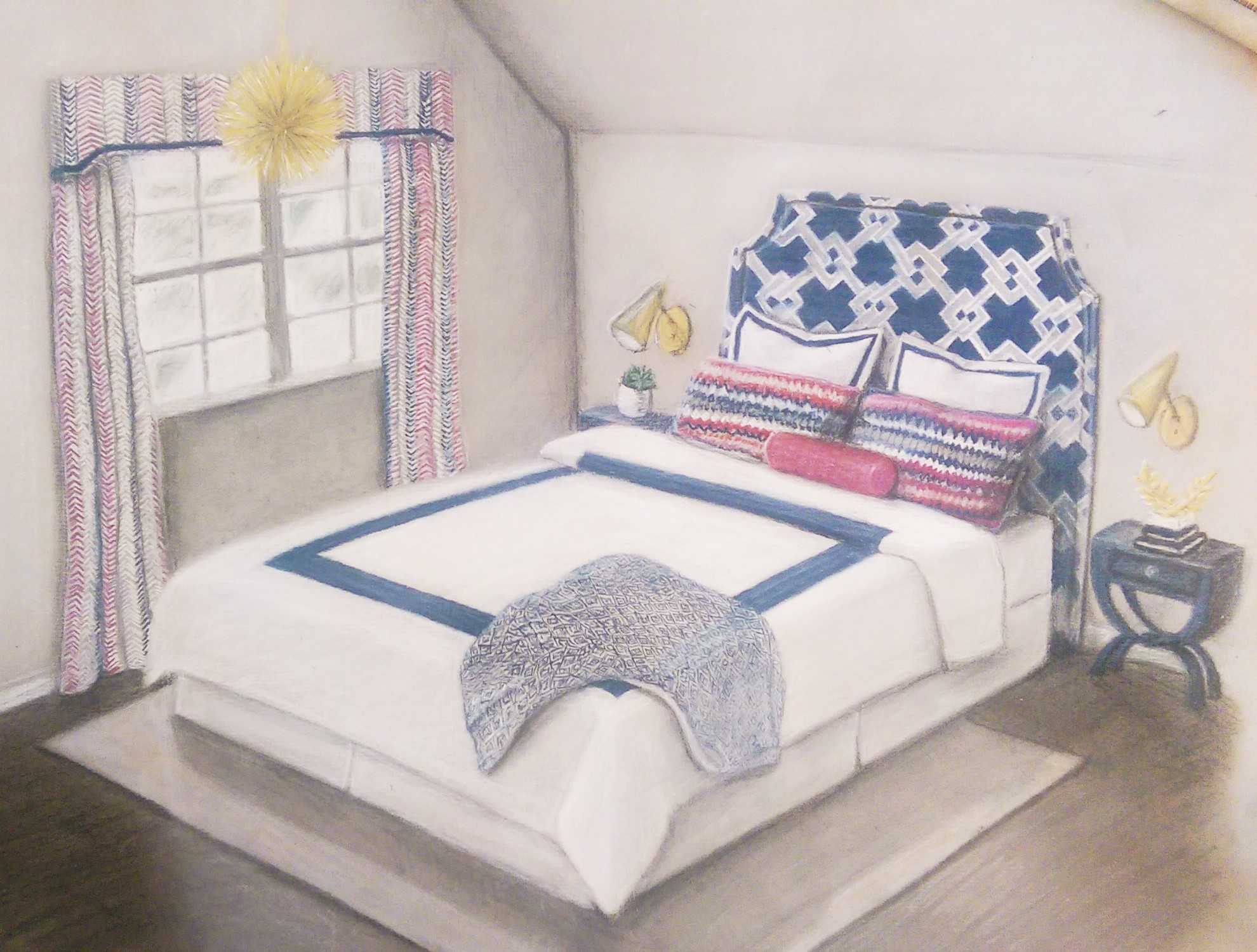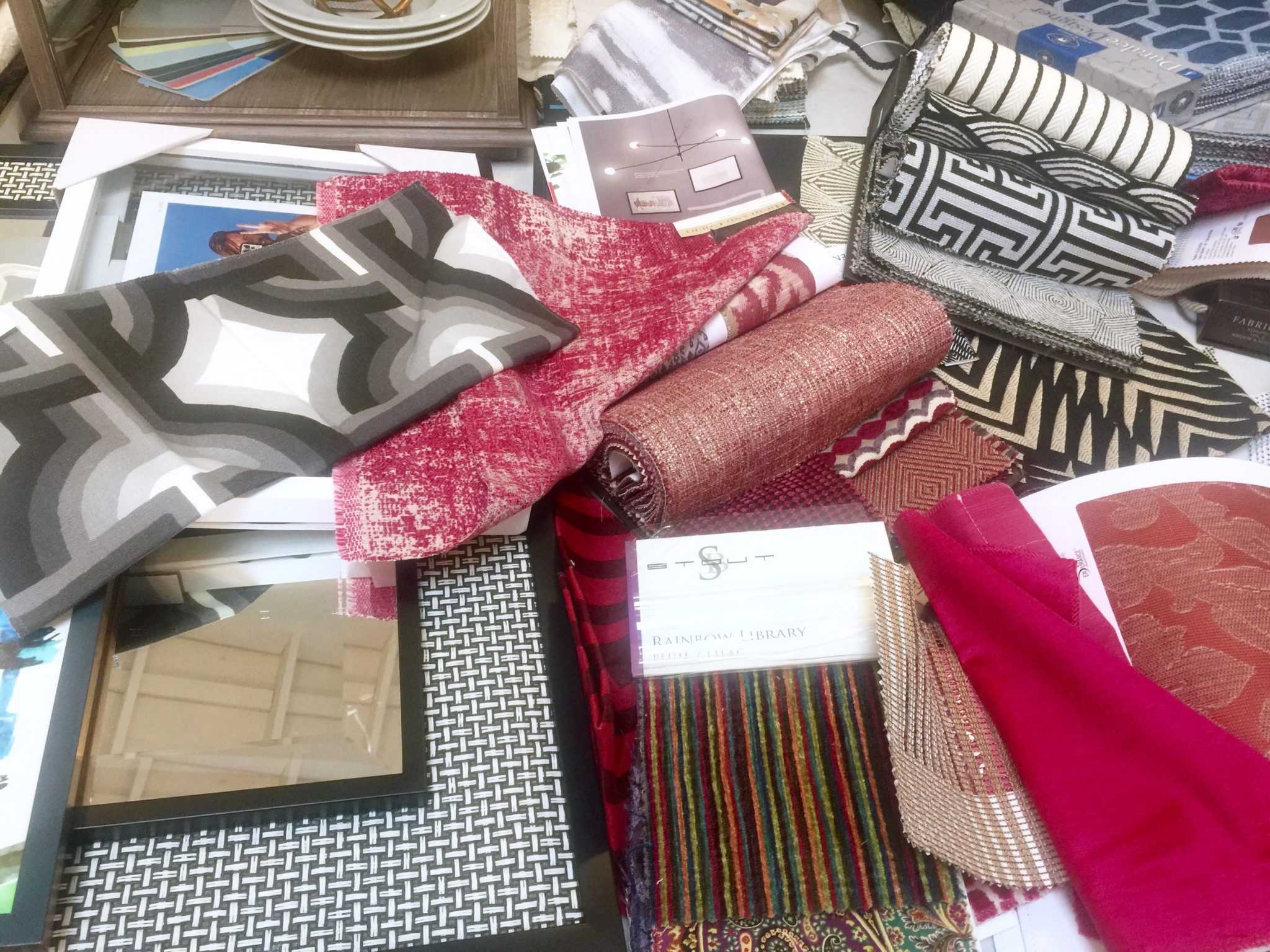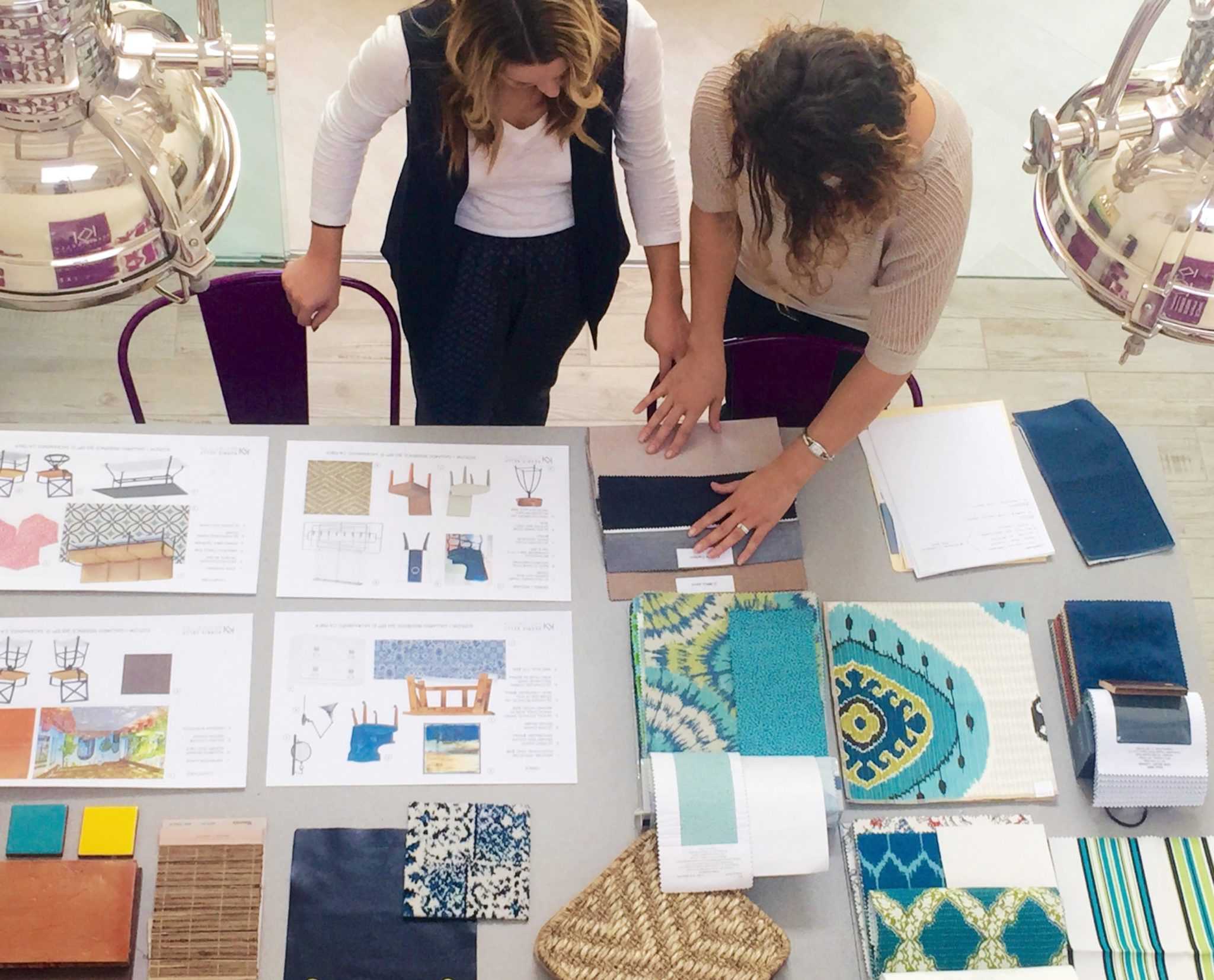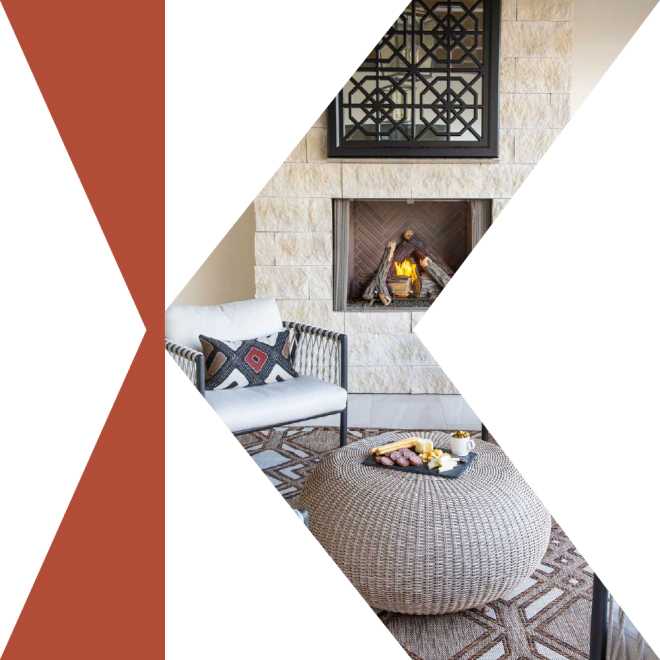There’s no reason you can’t handle a design project yourself. If the changes are simple enough or your skills are strong, you can complete the DIY project from planning to finishing touches. But you may want to hire professionals for the more complex parts of all of the jobs. This also means different things to different people. While our logistics team may feel they can handle a cabinet re-facing project all on their own, our resident marketing ladies shouldn’t be near a bucket of paint.
The key to deciding which project to hire an interior design for versus doing it yourself comes down to this: Are you comfortable spending money on a project to have it fixed if it doesn’t go the way you want it to? Is the risk worth the time and money spent potentially fixing DIY gone awry?

Why Hire a Professional vs. DIY
People turn to design professionals for a variety of reasons. The most important is the professional’s knowledge of sources. Professionals have canvassed the market and are able to obtain specialty goods on behalf of their clients. They can produce materials and finishes, photos and sketches, and renderings and schemes of the proposed finished space, allowing the client to visualize and approve concepts prior to starting the job. Working with professionals from the onset can spare you the frustration of managing multiple tradespeople for a project or recovering from a DIY blunder.
This is something we always try to emphasize to our clients. Sure, you can go on Amazon and find a console that looks like the shade of brown you’re looking for, and yes, it may even have free shipping. However, it is very likely that you won’t be able to speak to the manufacturer directly when that console table is missing hardware, came in a completely different color, and is 3-weeks later than originally quoted.
The digital era has presented our industry with unique obstacles and challenges, forcing us to be even more flexible and while creating opportunities to provide clients with concierge-like service with lightning speed shipping and turnaround times rivaling Amazon. In the age of DIY, it is not uncommon to hear horror stories from people ordering expensive (or even inexpensive) product, only to find that it will cost them more to ship back or have repaired. With a well-trained, certified, and educated designer, you will receive exactly what you’re promised. And if you don’t? You won’t be absorbing the cost, hassle, or stress of getting it right.
Here’s what else an interior designer can do for you:
Professionals can assist with controlling the budget.
We’ve all been there: All you wanted to do was put wallpaper in the powder bathroom. Easy enough, right? Wrong. The wallpaper wasn’t graded for bathroom use, the adhesive ruined the walls, now you have a construction problem that didn’t exist 3-months ago. Your $50 DIY Pinterest project has now turned into a $500 home renovation nightmare. Designers are specifically trained to know, understand, and work with product that is used for special purposes, like wallpaper in a bathroom, furniture for your outdoor patio, and tiling in the kitchen.
Professionals will make a time schedule for the project.
Similar to the above scenario, DIY projects often last a lot longer than they were intended, and in this case, time always equals more money. Trained interior designers build time around ordering, shipping, designing, specifying, building, and finishing a project, so your 6-month project will always be a 6-month project. And in our industry, consistency is key.
Professionals can help you avoid costly aesthetic mistakes.
Good designers go to multiple design industry shows where they can touch, feel and see product. They also host representatives from tried and true companies who can get them samples to share with clients while sharing their expertise. This means an educated designer can put together your desired look for you space even when mixing and matching brands, products and materials. They have seen them live and know the inherent details of the design elements.
Professionals can create structurally sound and functional designs.
Oftentimes our designers realize that a client needs a piece of furniture that our vendors and industry partners just don’t make, whether it’s a uniquely shaped bookshelf, a dining table seating an odd number, or a pattern or color we haven’t seen before. As designers trained in scale, proportion, engineering, and design, we often have the expertise on hand to create custom furnishings and designs. If we don’t, we definitely know someone who does.
Professionals can connect you with tradespeople and craftsman that perform outside of their scope to ensure work that is well-done and cost effective.
If we aren’t trained in a certain type of installation or product, we can connect you with resources who are. To that point, when we know we aren’t trained or well-versed in a specific product or service, we seek out training so that we can offer you exactly what you need.
The type of professional you might want depends on the scope of the project. Interior designers are experts in the nuances of different design styles and knowledgeable about the quality of furniture and other pieces, and can offer invaluable advice about overall layouts. There are licensed designers who specialize in a specific area, such as bathrooms or kitchens. As mentioned previously, when designers that are accredited and trained know that there is a new product coming onto the market, or an interesting new service or design technique, they are given training to develop and hone the skills needed to perform newly needed tasks.

Other types of professionals that can help your projects along include:
- Architects: Remodeling? Restructuring? Adding an edition or knocking down a wall? Hire an architect. These state-licensed professionals have gone through rigorous schooling, testing, and accreditation to be able to create structurally sound and functional designs.
- General contractors: Similar to an architect, a general contractor specializes in construction and is able to see things that designers often can’t, structurally speaking. Added perk: Some contractors have been in the business so long, they have a few design tips up their sleeves.
- Painters: These guys are awesome. If you are a DIY kind of person, a painter may seem like an added expense. However, trims, accents, mouldings, and special projects require a honed knowledge of primers, bases, finishing products, and maintenance. Hire a painter when you’re working on your exterior, trying a new finish, or just simply have no idea what you’re doing.
- Electricians: Need we say more? Electricians have invested in extensive schooling and training to be able to hard wire your home to perfection, ensuring your residence is safe and well-lit, not a wire out of place. If you attempt to do any rewiring or electrical work yourself without any prior knowledge, the results may be costly or even dangerous.
- Plumbers: Similar to painters and electricians, plumbers are specially trained to get down and dirty with your pipes. They know where the water is, where it’s not, how it’s getting from Point A to Point B, and how not to mess it all up. Plunging the toilet is one thing, installing one is a whole different story.
Even if you need design help but can’t afford a trained designer or architect—and don’t assume that you can’t without interviewing a few—don’t overlook the design tools that we offer such as Pinterest, Houzz Ideabooks and our blog. This will expose you to trusted products and can offer options you might not have considered.
Next Steps
When looking for a professional, it’s wise to interview multiple candidates and ask for references, especially for a large project. Ask to see the work executed by the firm and inquire among your friends, family, and neighbors to see who they’ve hired and how it worked out. Reach out to homeowners’ who’s spaces you admire and see if they’re willing to connect you with their designer, or where they got their inspiration from. Also, be sure you feel you can work well with the person. While you may love Designer A’s portfolio, his or her personality may not jive with yours. More often than not, through the design process and after becoming acquainted with the preferences and needs of a client, the professional becomes a personal friend as well. Houses become homes when all of the design ideas and aspects come together.

Once you have found a person you want to work with, you should have a contract that clearly states the job requirements, fee, and schedule. Smaller jobs that last only a few days might not require such a formal contract, although you should get fees and the schedule in writing.
Once the black and white has been addressed, there are a few things you should keep in mind:
Be forthcoming with your thoughts, ideas, and input.
Your designer probably can’t read minds or see the future. Knowing this, always offer your thoughts during your initial meetings and presentations. Though it may seem too direct or a little out of place, objecting to something or asking for a reselection during the infancy stages of a design project is the easiest way to make changes—not 6-months in, once the arm chairs are on their way.
Sit back and relax.
Assuming you’ve read and acted on point #1, consider this Point 1b. You’ve selected your designer (or firm) for their awesome personality, stellar expertise, and you’ve presented your thoughts in the initial stages of the design. Now, it’s time to let them get to work. Please, by all means, email to ask for an update once in a while, shoot over a text if you have a fabric question, or even chat with your designer to see when the next big step is that you need to be included in. But if you have a contract written up giving you times, dates, and specifications, consider your designer well-informed and busy doing their job. A surefire way to slow the design process and create a bigger project is by emailing your designers 3-4 times a day with thoughts, ideas, and questions, or attempting to tie a DIY project into the mix.
Provide updates.
As designers, we love seeing project shots of a fresh coat of paint, a newly installed vanity, or the flashy new backsplash in the kitchen. Not only are these pictures beautiful to look at, but it reinforces our timeline, allowing us to check a box and move onto the next project knowing we’re on the road to success.
Our dear friend, Architect Clay Aurell says it best, “As an architect, my favorite part of the business is the professional-client relationship. It can be very rewarding for both parties. Clients are about to put their heart and soul into their new project, and a good professional will work with the client to help them realize their dreams. The architect or designer has the opportunity to take a multitude of ideas, magazine clippings, fabrics, artwork, and items that are dear to the client and put them together and make an appropriate space out of all of it.”
Tell us: Have you experienced DIY gone awry? Or have you worked with a designer and have a story to share? Let us know in the comments below!

